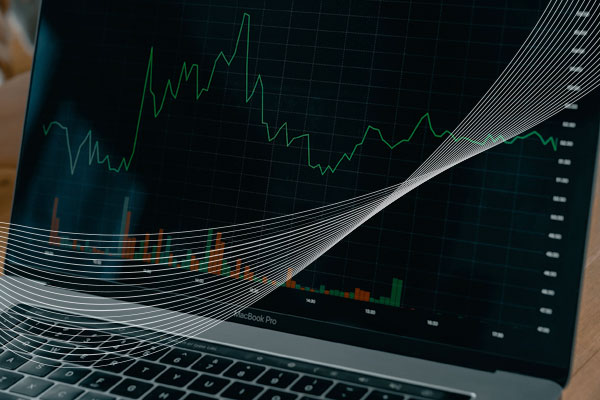There is a heightened emphasis on data-driven decision-making for brands and their agencies when it comes to buying advertisements. There are two sides to this coin. This blog explores how the media companies selling those ads must also be data-driven to meet buyer expectations and remain competitive in an era of micro-targeting and channel proliferation.
Data is Exploding – Are Ad Sellers Using it to Drive Decisions?
Think about how you consume media, and in turn, the advertising messages that come with it. You may listen to a podcast on your morning commute, read billboards while sitting in traffic, thumb through magazines at your doctor appointment, scroll through your favorite social media feed during your lunch break, take the kids to a movie after work, and wind down with some streaming shows on your iPad before bed.
Point being, the ways in which the average person engages with media have multiplied and any ad agency worth its salt is actively mining for and refining impression data to reach an ever-more-specific target audience.
“Brands, many of which are well versed by now in the power of digital media, are increasingly seeking a more dynamic, flexible, and data-driven TV-buying environment,” writes The Trade Desk in its Future of TV Report.
The “data-driven” decision matrix for today’s ad buyers has been studied and reported ad nauseum. What about the other side of the coin? Media platforms – those selling precious ad real estate – are navigating this complex landscape from the opposite direction. They also need to be data-driven to get the most bang for their inventory. Whether selling ads for linear TV, CTV, audio, digital, traditional publications, or anything in between, companies with ad sales strategies stuck in the 20th century risk a negative customer experience, revenue shortfalls, or even obsolescence in a data-driven world.
So let’s get specific on how to better use the data we have to clear up an opaque landscape. Here are three ways media platforms should adopt a data-driven approach to selling ads:
#1 – Know Your Market Absolutely… and How it Impacts Buyer Elasticity
Buyer expectations are exploding, given the rise of digital and streaming platforms. Ad agencies and their customers want to micro-target their messages. As a media platform, you hold the map to this pot of gold. If you are unable, or unwilling, to analyze and share micro-targeted data, your buyers will leap to a competitor who will. This is especially relevant in the upcoming network upfront cycle, which figures to see connected TV (CTV) ad spend continue to close the gap with traditional linear TV.
According to a new survey by MNTN, “CTV is the only platform that shows consistent, notable growth in its percent of devoted ad budget: Nearly three-quarters (73.8%) of marketers and agencies say they increased CTV ad budgets from 2021 (13% of budget) to 2022 (16%), and plan to do so again in 2023 (19% of budget on average).”
“Because CTV is digital, many marketers want to understand who is watching their ads in a much more granular way than was ever possible with linear TV,” according to The Trade Desk. “At the same time, a portion of marketers surveyed said they want CTV to be able to provide not just better viewership data, but also actionable data that can be used for execution and optimization.”
This means that granular viewer/consumer analytics capabilities are now table stakes. But they won’t differentiate you or maximize your ad revenue on their own. The next frontier belongs to data science – specifically the ability to use all that data to optimize rates today and into the future. Historically, this has been a gap. Buyer and rate data has not been optimally leveraged by media platforms to improve future pricing or selling decisions.
Companies can now operationalize their data and inject science into their ad selling process. This not only benefits buyers, but it is also the keystone to driving more ad revenue. If you sell linear or CTV ad space, consider:
- Can you pinpoint the optimal upfront inventory to reserve versus scatter inventory to hold?
- Can you project what buyers will be willing to pay for remaining inventory on the spot market six months out?
- Can you optimize spot quotes for maximum revenue and arm your sales team to negotiate from a position of strength?
A price optimization solution like Zilliant Price IQ® helps media platforms answer each of these questions in the affirmative. Built on advanced data science, Price IQ® accounts for all the ways that rates are expressed in your business – standard rate cards, spot quotes, scatter market negotiations, long-term buyer contracts, et al. Learn more here.
#2 – Intelligently Set and Manage Rate Cards
Whether you’ve invested in data science to optimize your rates or not, the standard process for setting and managing rate cards is in need of a facelift. Most media companies rely on Excel to manage rates. This manual method makes it difficult to run historical analysis or even quickly determine what an ad spot was sold for the year prior to a given buyer.
It is also not ideal for re-pricing efforts or making rate decisions on-demand in what is now a year-round dynamic environment. Need to mass update all your linear TV rate cards because price is rising industry-wide? That’s another line-by-line process, uninformed by relevant data points and prone to human error. One multi-billion-dollar media company had its corporate pricing team spending three-to-five hours each week creating rate cards.
There is a better way to manage rates. One that centralizes the rate administration process in one system alongside historical customer data, audience data, impression analysis, and any other critical pricing decision point.
Zilliant Price Manager™ helps such companies maximize revenue and improve efficiency. The system replaces spreadsheets and puts those ultimately responsible for rate management back in control. The data and tools they need are at their fingertips to change rates, understand the impact of changes before they are pushed live, and seamlessly push new rates into each sales and customer touchpoint.
What used to take hours or days can be accomplished in minutes, leading to consistently up-to-date rates that accurately reflect demand. Learn more here.
#3 – Streamline Proposal Management
Optimizing rates and improving the management process is vital. But what happens when sales representatives interact with buyers and the rubber meets the road? In our new data-driven approach, the long-outdated proposal process is made much more effective.
It’s a welcome upgrade for an industry that still hasn’t fully mothballed the fax machine. Often a media platform will receive requests for quotes over a fax containing scant handwritten details. “Same CPM as last year, spread over 75% primetime, no daytime news.” The sales rep is then tasked with building a proposal – ASAP – that makes sense and hopefully meets revenue metrics.
Further, ad-hoc requests such as these tend to kick off arduous approval processes. The sales rep at least upgrades from fax to email in order to get management signoff. But it’s still far too slow and lacking in trustworthy rate guidance.
Data-driven proposal management powered by Zilliant delivers CPM guidance to sellers at the customer and deal level, allowing them to build quotes quickly and route for approval in seconds within the same software platform. Approvers are alerted immediately and can analyze off-rate proposals against the actual financial impact.
Bottom Line
Media platforms and ad sales departments can thrive in a fragmented, buyer-empowered market if they emphasize data-driven decision-making powered by modern-not-manual approaches.
Contact a Zilliant representative to get started today.



